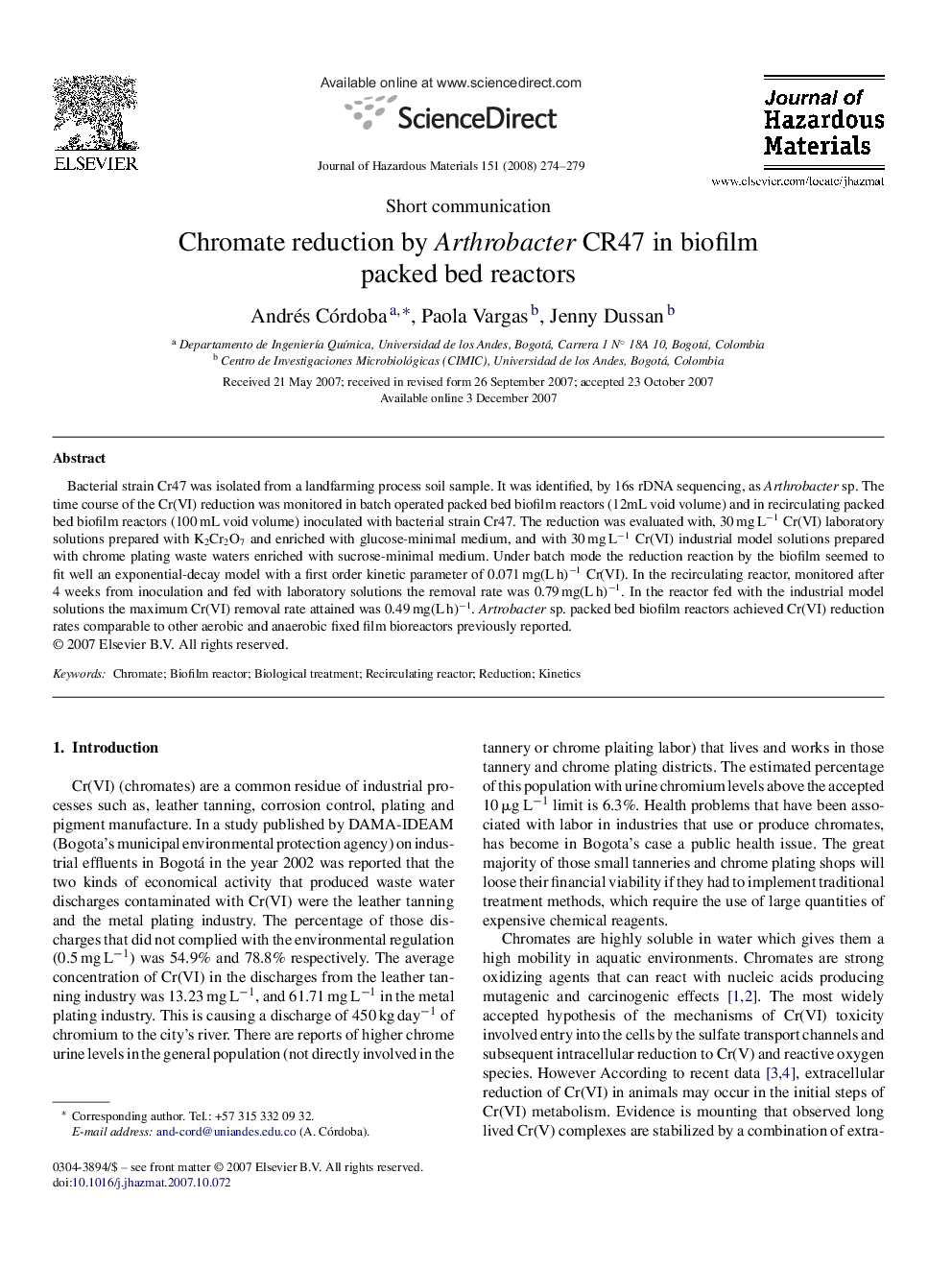| Article ID | Journal | Published Year | Pages | File Type |
|---|---|---|---|---|
| 583553 | Journal of Hazardous Materials | 2008 | 6 Pages |
Abstract
Bacterial strain Cr47 was isolated from a landfarming process soil sample. It was identified, by 16s rDNA sequencing, as Arthrobacter sp. The time course of the Cr(VI) reduction was monitored in batch operated packed bed biofilm reactors (12mL void volume) and in recirculating packed bed biofilm reactors (100 mL void volume) inoculated with bacterial strain Cr47. The reduction was evaluated with, 30 mg Lâ1 Cr(VI) laboratory solutions prepared with K2Cr2O7 and enriched with glucose-minimal medium, and with 30 mg Lâ1 Cr(VI) industrial model solutions prepared with chrome plating waste waters enriched with sucrose-minimal medium. Under batch mode the reduction reaction by the biofilm seemed to fit well an exponential-decay model with a first order kinetic parameter of 0.071 mg(L h)â1 Cr(VI). In the recirculating reactor, monitored after 4 weeks from inoculation and fed with laboratory solutions the removal rate was 0.79 mg(L h)â1. In the reactor fed with the industrial model solutions the maximum Cr(VI) removal rate attained was 0.49 mg(L h)â1. Artrobacter sp. packed bed biofilm reactors achieved Cr(VI) reduction rates comparable to other aerobic and anaerobic fixed film bioreactors previously reported.
Related Topics
Physical Sciences and Engineering
Chemical Engineering
Chemical Health and Safety
Authors
Andrés Córdoba, Paola Vargas, Jenny Dussan,
